Table of contents
- Restoration of Moto Guzzi Le Mans I and Moto Guzzi V7 Sport Back to the original condition
- Motorcycles largely in their original condition
- Luckily, underseat lighting is still on
- Benches stand out the most from each other
- Original Neiman locks discovered in a market
- Opinions on the restoration
- Fred Siemer (59): Such showpieces can even tell a story
- Andy Schwietzer (52): Traces of use are historical evidence
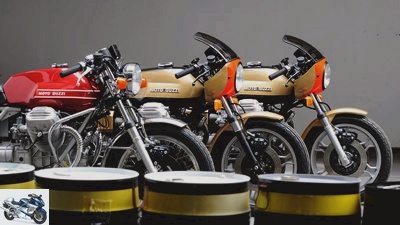
Siemer




24 pictures
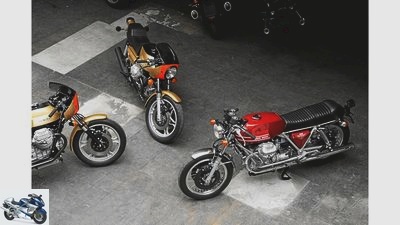
Siemer
1/24
Two Le Mans I and a V7 Sport in original and museum condition.
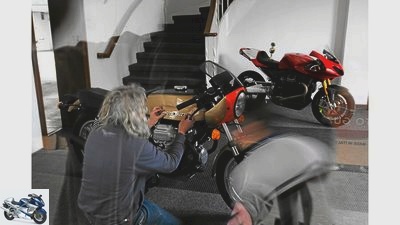
Siemer
2/24
Reinhard Backer doing the freestyle. Freehand.
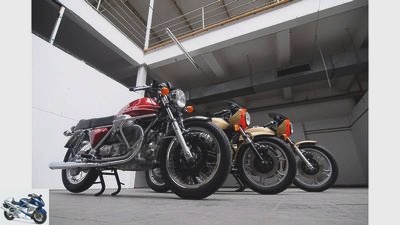
Siemer
3/24
Restoration of Moto Guzzi Le Mans I and Moto Guzzi V7 Sport.
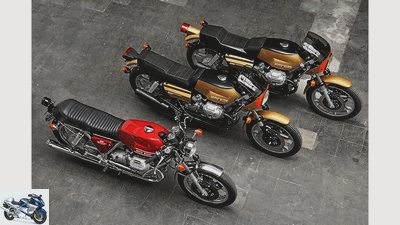
Siemer
4/24
Restoration of Moto Guzzi Le Mans I and Moto Guzzi V7 Sport.
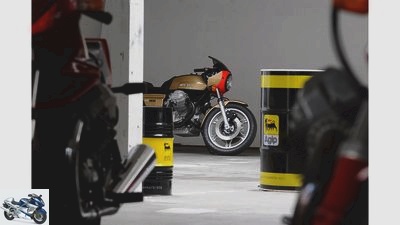
Siemer
5/24
Restoration of Moto Guzzi Le Mans I and Moto Guzzi V7 Sport.
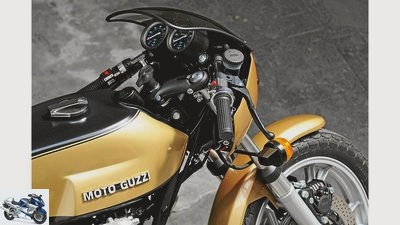
Siemer
6/24
Speedometer without trip odometer means: first series of Le Mans I..

Siemer
7/24
According to the client, the golden paint was given in the USA. Ob‘s true?
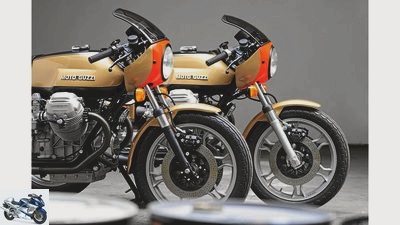
Siemer
8/24
Which is definitely true: there were black dip tubes in series two.
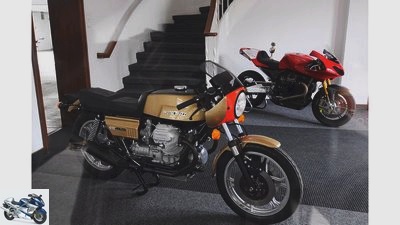
Siemer
9/24
Restoration of Moto Guzzi Le Mans I and Moto Guzzi V7 Sport.

Siemer
10/24
Series one of Le Mans I has a round tail light and a one-and-a-half-seater.
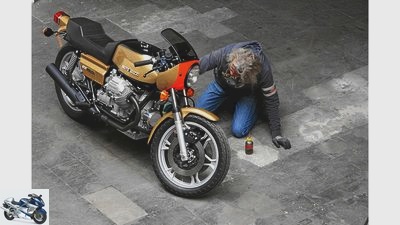
Siemer
11/24
Restoration of Moto Guzzi Le Mans I and Moto Guzzi V7 Sport.
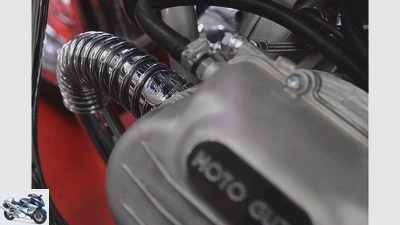
Siemer
12/24
But they run as a contemporary accessory.

Siemer
13/24
… and no, the fuse box has not been modernized either.
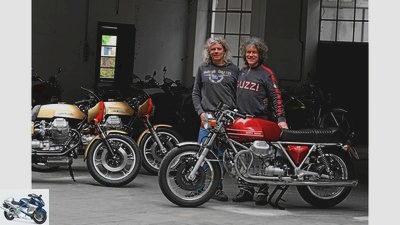
Siemer
14/24
Anyone who is a Guzzi through and through will of course be happy about a beautiful V7 Sport. Reinhard Backer and Peter Gries (right) behind their gem.

Siemer
15/24
Moto Guzzi Le Mans I and Moto Guzzi V7 Sport.
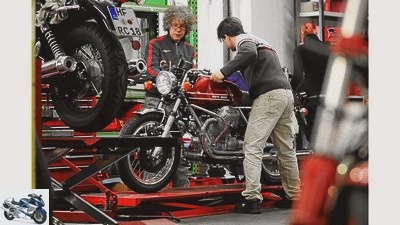
Siemer
16/24
The very last work on the V7 Sport, then it starts for a test run.

Siemer
17/24
The spirals around both bends are supposed to protect or cool, you don’t know…
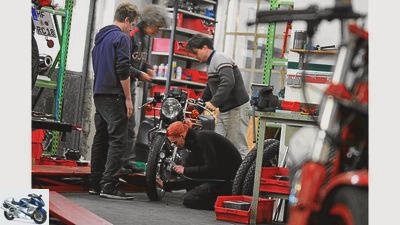
Siemer
18/24
After pressing the button, the motor stirs, a few settings later it runs really well.
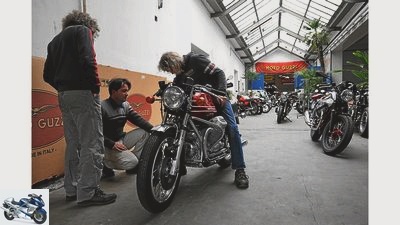
Siemer
19/24
We learn: The mechanics are often less of a concern than the periphery.
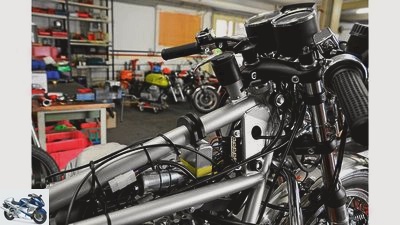
Siemer
20/24
From the dimmer switch to the ignition coil: The restoration of the electrical system was a lot of work, …
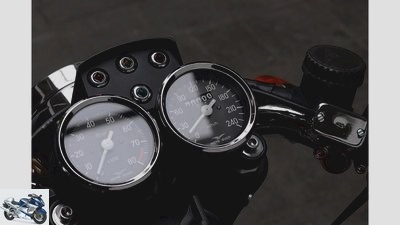
Siemer
21/24
… But it was also worth it.
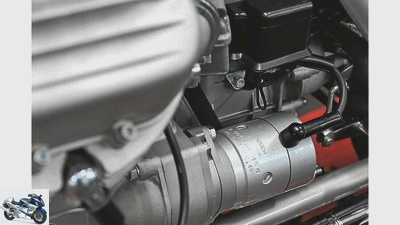
Siemer
22/24
Yes, it had to be the Bosch starter without a magnetic switch, long since booted out by many …
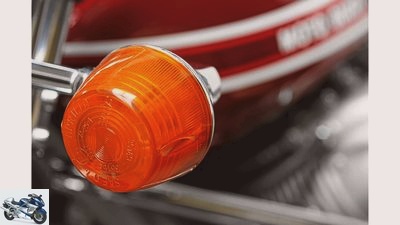
Siemer
23/24
The Aprilia indicators with their newly silver-plated reflectors deserve special attention.
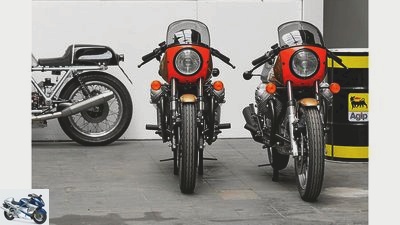
Siemer
24/24
Restoration of Moto Guzzi Le Mans I and Moto Guzzi V7 Sport.
counselor
workshop
Restoration of Moto Guzzi Le Mans I and Moto Guzzi V7 Sport
Restoration of Moto Guzzi Le Mans I and Moto Guzzi V7 Sport
Back to the original condition
Content of
For a discerning collector, Guzzi dealer Reinhard Backer and his team have restored two Moto Guzzi Le Mans I and a Moto Guzzi V7 Sport to their original and museum condition. An adventure.
Fred Siemer
04/09/2015
Everything can be done well. And you can do it very well. Which does not mean that you have done everything as well as you can. The last-mentioned procedure, the mechanics and boss of Guzzi Backer from Laer in the Munsterland have known this very well for several months, requires real learning and suffering. For well over two years they had been busy with three extensive restorations, a few months ago it was finally done: The Moto Guzzi V7 Sport as well as two Moto Guzzi Le Mans I of an extremely ambitious customer shone again in their original condition as new. Anyone who asks “So what?” Has not really grasped the project.
Buy complete article
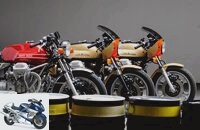
Restoration of Moto Guzzi Le Mans I and Moto Guzzi V7 Sport
Back to the original condition
8 pages) as PDF
€ 2.00
Buy now
The initial situation: Said customer was very satisfied with a Moto Guzzi Le Mans I set up by Reinhard Backer and his team for fun and stylish driving. Lighter flywheel mass, larger carburettors, Lafranconi exhaust system – the guys had built in what is fun on the country road. However, this customer not only drives, he mainly collects. Among other things, all sporty Guzzis with V-engine.
Motorcycles largely in their original condition
The emphasis here is on all of them, so he needed another Moto Guzzi V7 Sport with disc brakes as well as the undeveloped Moto Guzzi Le Mans I of both series. He brought two motorbikes with him, one of which was for sale at the baker’s. The plan: The complete dismantling should show whether there are bad hidden defects somewhere, then a price for the restoration would be negotiated. “All three motorcycles”, reports Reinhard Backer, “of course had a life behind them. But they were largely in their original condition, had, if you could tell, no astronomical mileage and stood there neatly. ”There were no defects, so we went to work.
Just how Of course, everyone can tell the difference between a defective indicator and a working one. But the demand for originality demands more: It has to be the turn signal that exactly matches this chassis number and is installed in the right place, and that on motorcycles over or just under 40 years old. Around 4,000 copies of the Moto Guzzi V7 Sport were built between 1972 and 1974, including a good 150 pre-production models with the mostly red painted frame (telaio rosso). There were three series that are actually quite easy to distinguish, but there were also deviations or smooth transitions in the equipment. Today’s photos, as the baker boys quickly learned, are of little help, but luckily the Internet sometimes even provides views of rare brochures. “This was the only way we could see how the motorcycles left the factory at that time,” says mechanic Sergej Cicerin, still moaning about the tedious work on the screen: “Most of the photos on the Internet come from private machines. You can almost all forget them because everyone grows what they have or what they find beautiful. ”
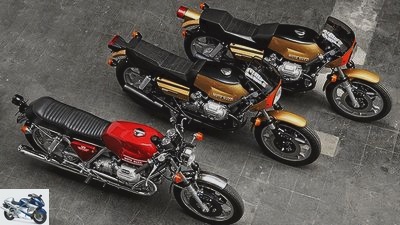
Siemer
Already had a life behind them – and one thing ahead of them: the three V7s.
The question of whether there ever was a Moto Guzzi V7 Sport with disc brakes, however, only arises from outsiders. A clear case, yes, and from 1973, double-pane front and rear pane as an option in Europe, and double-pane as standard in the USA. The rarely sold kit not only included the steel disks and Brembo pliers, but also fork dip tubes, fender bracket and brake armature. As early as 1972, the Americans were allowed to choose between black and gray frames, the following year also Europeans. Baker’s customer opted for gray, and that goes perfectly with the deep red paint on the tank and side covers – the most popular color combination in North America at the time.
In normal life, this is where the tank comes to the painter and the tank cap, which has been checked for leaks, is – once overpolished – stowed away on the shelf for a while. In the present case, however, Peter Gries disassembled the lid into all of its individual parts and gave the metal to be coated. Even the petrol taps – the one on the left already works electromagnetically – were dismantled and given their typical surface. With very pointed fingers, Gries also started replacing the electrics. Socket strips, housing of ignition coils or relays: Everything, really everything should look exactly the same as possible when this Moto Guzzi V7 Sport was delivered in 1973. “As a result, we dismantled almost everything, restored it and, whatever was possible, refurbished the original ourselves,” reports Gries, who often benefited from his previous professional experience. He is a trained dental technician.
Luckily, underseat lighting is still on
That’s why he was the right man to reactivate the underseat lighting of the Moto Guzzi V7 Sport. This cute little light above the fuse box used to last seldom more than three or four years because its rather freely arranged connections are in the acidic atmosphere of the battery. “Fortunately, it was still there,” laughs Reinhard Backer, and after the treatment by Peter Gries, when the bench is open, not only does the polished original lightbulb shine again, but also its socket and the freshly chrome-plated holder.
All that flawlessly, and generally: Under the tank or bench, it seems, the real differences between a good restoration and a restoration that is true to the original are revealed. “It’s kind of right,” adds Backer, “but you can also see them in many tiny details.” Screw heads, for example, whose imprint they identify as contemporary. “They have all been re-galvanized or chrome-plated.” Then Backer refers to the indicators. The parts come from Aprilia, but have nothing to do with the motorcycle manufacturer of the same name. “At least in Germany they were probably installed,” he speculates. And where else?

Siemer
Not much of a difference: the two Moto Guzzi Le Mans.
According to research by the baker’s customer, the headlights of the two Moto Guzzi Le Mans had to be from this manufacturer. But we weren’t there. Not so bad, because Reinhard Backer spends some time every day getting old Guzzi parts. “From screws and body parts to, logically, complete motorcycles.” At some point he had two Aprilia headlights on the hook. Here too: glass removed, reflectors removed, silver-plated again. Craziness. Likewise, two old Koni struts, because on those of the Moto Guzzi V7 Sport the plates of the spring base adjustment were crumbled. After dismantling it went to the chrome plating. The same, of course, first removes the chrome, and then things get tricky: “Filigree parts must not be processed with coarse grinding tools,” reports Peter Gries, “otherwise all those delicate profiles, embossings and markings that ultimately matter will be lost.”
The first attempt at the chrome plating cost almost a complete adjustment ring because the setting marks were no longer visible. The two Le Mans cars, in turn, wore complete suspension struts that could be restored. But shouldn’t these have linearly coiled springs? Right, decided Sergej Cicerin after a long study of pictures and prescribed the thinner of the two possible variants. “Thicker steel springs were for the tourers,” he says. And the others? It’s tricky: you can research as much as you want, remaining quiet doubts. For example, the customer says that on the first version of the Moto Guzzi Le Mans I, the front indicators should be attached lower in the frame.
Benches stand out the most from each other
Even die-hard Guzzisti can hardly distinguish the Moto Guzzi Le Mans I from the first series presented in 1975 (almost 2900 units) from the second series produced from 1977 (a good 3300 units). Why also? Technically nothing had changed, Lino Tonti’s model athlete was still a stunner. It must have been reasons of cost or rationalization that led to the use of a different rear light (very noticeable), a new fender (hardly noticeable) or other instrument pots (not noticeable at all).
The bench seats stand out from each other the most, but only the very old know that, because even before the second series appeared, many drivers of the first series swapped their funny one-and-a-half for a full-blown two-seater. That’s just how he is, the motorcyclist. Practical and hands-on. With the fatal consequence in this case that there are almost no one-and-a-half-seater today. When such a bench finally appeared, it had a small crack, and it had to stay, yes, in such a clearly visible place of all places. Because the bench has no cover, but was foamed as a complete part.
Restoration of the BMW R 80 G / S part 1 – 6 as PDF in the e-kiosk

Naked bike
BMW R nineT, Moto Guzzi Griso 1200, Yamaha XJR 1300 and Honda CB 1100 in comparison
Far from cornering ABS and traction control
read more
Original Neiman locks discovered in a market
It doesn’t stop: Sergej Cicerin found someone who can refurbish old Brembo systems really fine – and who also has the necessary parts. He had previously re-anodized all the brake calipers and had them determined in several test runs how to do it, so that when the old anodized material is removed, deep holes are created in the material at precisely those places where the anodized material was no longer due to mechanical influences. Reinhard Backer and Peter Gries discovered original Neiman locks at a market at a Heinkel stand, and almost at the same time it flashed through them: They fit the side covers of the Moto Guzzi V7 Sport. You bought all of them. “Somehow,” says Cicerin, “we’ve been thinking about this project almost every day all this time. Had an idea, discovered a part, found a specialist. ”The three old athletes had long been surrounded by a special aura. Peter Gries: “It blows something to do with an almost historical project like this.”
And then it was screwed together: Compared to the periphery, the mechanical parts of all three Guzzis were practically no major concern. Contrary to their usual practice, the mechanics dutifully installed all of the original parts again and didn’t have to replace anything important except for pistons. The ground cylinders now show the first oversize. Even in the dark of the engine and gearbox housing, the sacred original condition should of course prevail, from ancient lock washers to heavy flywheels. The motors went into the frames, electrics attached, carburettors and such, then came a call. The customer. The two Le Manss, he had thought, should be added to his collection immediately. “The next day,” says Reinhard Backer, “we would have let them run for a test.” So not now. If your heart contracts now, be consoled: The V7 Sport can look forward to trips. She runs. As beautiful as on her first day.
Opinions on the restoration
<!– ESI FOR ads.BannerGallery / irelements / esielement / eyJwYWdlIjoiL3N0YXJ0c2VpdGUvIiwibGF5b3V0IjoiYXJ0aWNsZSIsImVsZW1lbnQiOiJhZHMuQmFubmVyR2FsbGVyeSIsImlyQ29uZmlnIjoiMTQ3MjE3OTUiLCJwYXJhbXMiOnt9LCJpc01vYmlsZSI6ZmFsc2V9 –> <!– CACHEABLE –>&# 34;,&# 34; rectangle&# 34 ;: “<!–# include virtual = \&# 34 / irelements / esielement / eyJwYWdlIjoiL3N0YXJ0c2VpdGUvIiwibGF5b3V0IjoiYXJ0aWNsZSIsImVsZW1lbnQiOiJhZHMuUmVjdGFuZ2xlR2FsbGVyeSIsImlyQ29uZmlnIjoiMTQ3MjE3OTUiLCJwYXJhbXMiOnt9LCJpc01vYmlsZSI6ZmFsc2V9 \&# 34; –> <!– ESI FOR ads.RectangleGallery / irelements / esielement / eyJwYWdlIjoiL3N0YXJ0c2VpdGUvIiwibGF5b3V0IjoiYXJ0aWNsZSIsImVsZW1lbnQiOiJhZHMuUmVjdGFuZ2xlR2FsbGVyeSIsImlyQ29uZmlnIjoiMTQ3MjE3OTUiLCJwYXJhbXMiOnt9LCJpc01vYmlsZSI6ZmFsc2V9 –> <!– CACHEABLE –>&# 34;,&# 34; sky&# 34 ;: “<!–# include virtual = \&# 34 / irelements / esielement / eyJwYWdlIjoiL3N0YXJ0c2VpdGUvIiwibGF5b3V0IjoiYXJ0aWNsZSIsImVsZW1lbnQiOiJhZHMuU2t5R2FsbGVyeSIsImlyQ29uZmlnIjoiMTQ3MjE3OTUiLCJwYXJhbXMiOnt9LCJpc01vYmlsZSI6ZmFsc2V9 \&# 34; –> <!– ESI FOR ads.SkyGallery / irelements / esielement / eyJwYWdlIjoiL3N0YXJ0c2VpdGUvIiwibGF5b3V0IjoiYXJ0aWNsZSIsImVsZW1lbnQiOiJhZHMuU2t5R2FsbGVyeSIsImlyQ29uZmlnIjoiMTQ3MjE3OTUiLCJwYXJhbXMiOnt9LCJpc01vYmlsZSI6ZmFsc2V9 –> <!– CACHEABLE –>&# 34;}}” ga-track-vis =”article.gallery.inline.vis” class =”v-A_-article__inline-container”>
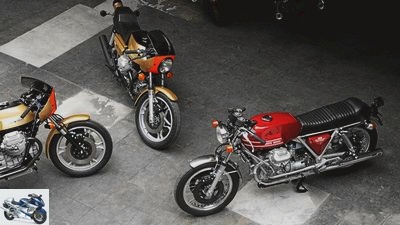
Siemer




24 pictures
Pictures: Restoration of Moto Guzzi Le Mans I and Moto Guzzi V7 Sport
go to Article
To home page
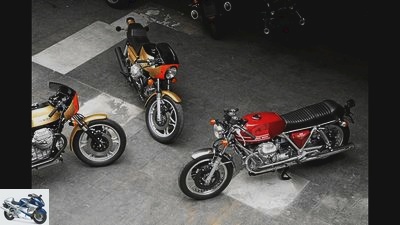
Siemer
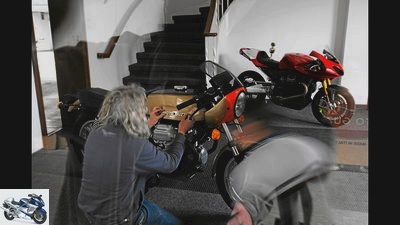
Siemer
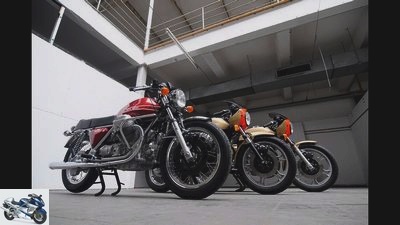
Siemer
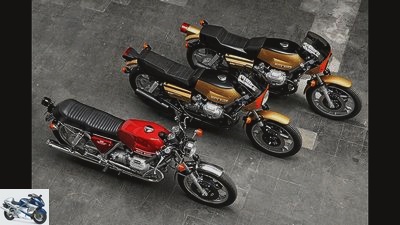
Siemer
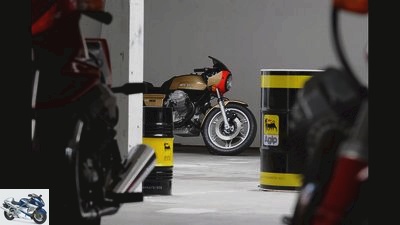
Siemer
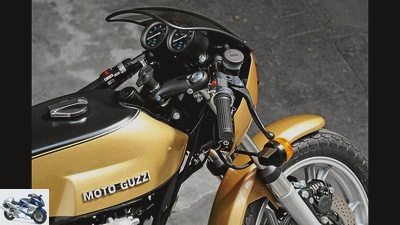
Siemer
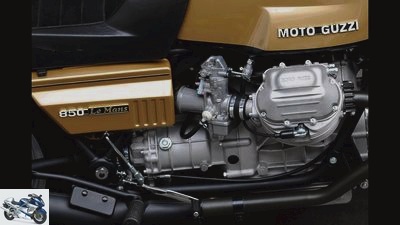
Siemer
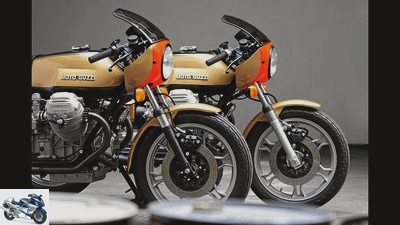
Siemer

Siemer

Siemer
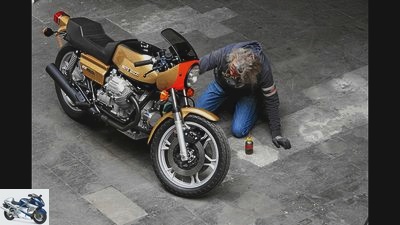
Siemer
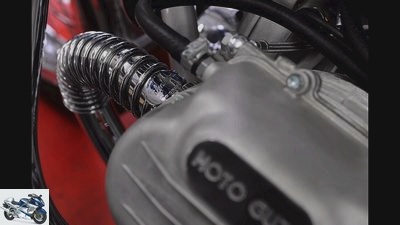
Siemer

Siemer
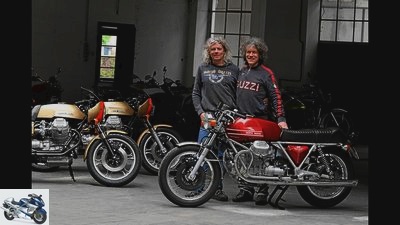
Siemer
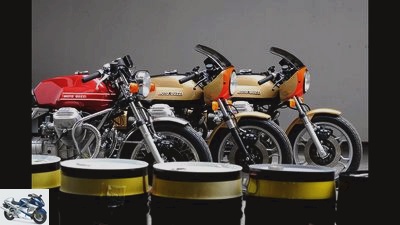
Siemer
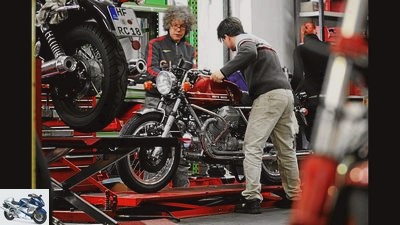
Siemer
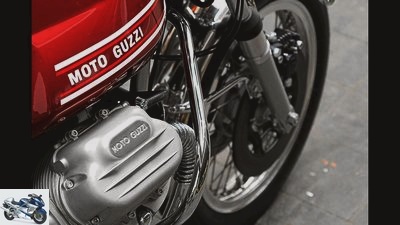
Siemer
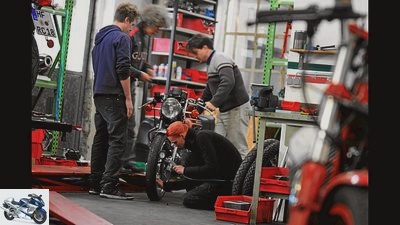
Siemer
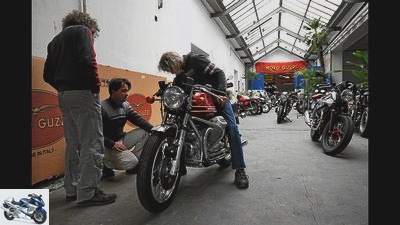
Siemer
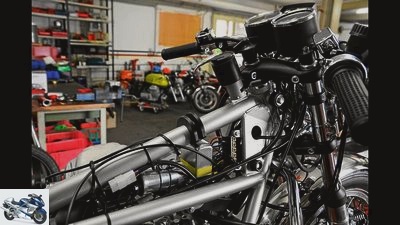
Siemer
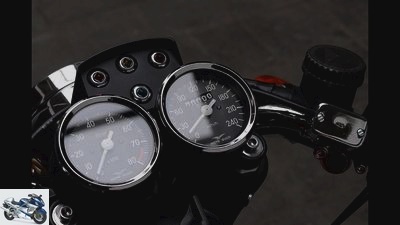
Siemer
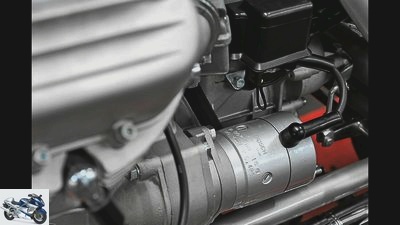
Siemer

Siemer
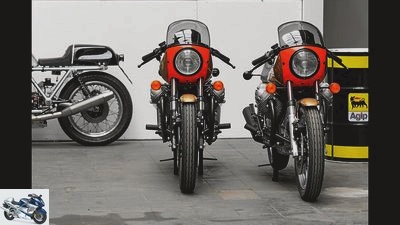
Siemer
1/24
Fred Siemer (59): Such showpieces can even tell a story
Of course everyone can do what they like with their money. There are a few legal restrictions, of course, but buying Guzzis and having them restored to full maturity is not one of them. So far, however, such projects have always left me with an aftertaste. At least the question of whether we are not putting too much on the motorcycle. Even Lino Tonti would probably have agreed: A Moto Guzzi V7 Sport is not a Picasso. Why does this or that part have to look exactly like it did in 1973? Since we know that what was there was often used, especially by Italian manufacturers. I also worry that many of these showpieces are simply lost to the normal motorcycle world. Put it in the private museum.
I actually prefer every well-hung Le Mans, regardless of the series that still finds its way to the biker meeting. I thought so. And then suddenly stood in front of these three Guzzis. I was amazed at the tremendous craftsmanship of their restorers, their patience and their sensitivity. With my eyes I crawled into every corner of these wonderful machines, and very gradually, but with great emphasis, time has turned back. Then I realized: Even original restorations can tell stories. They just have to be really well done.
Fred Siemer, freelance journalist, has been writing for MOTORRAD Classic and MOTORRAD for 30 years.
Andy Schwietzer (52): Traces of use are historical evidence
Originality is a great asset. To restore or not? If the question arises, it shouldn’t be. We love old motorcycles because they tell of past decades and take us on a journey through time. And the more the motorcycle tells of the thoughts and intentions of its builders and sellers as well as of the experiences and worries of its drivers, the greater its historical value. Therefore, restoration is only the first choice for rusted fragments, botched craft objects or total losses, in other cases only careful repairs or maintenance measures should be carried out. Many restorations in the 1980s and 1990s destroyed more substance than they saved.
The private person who rides his motorcycle is welcome to add another handlebar if he feels more comfortable that way. And those who shy away from the cost of chrome on the tank are not a criminal if they apply silver bronze. For motorcycles that are on public display, however, authenticity should be the top priority. It doesn’t have to be the same condition the motorcycle was in when it left the factory. Accessories, modifications or signs of use from the years of use are historical evidence. Anyone who claims to report what it used to be like shouldn’t let personal taste but let the story decide what the motorcycle should look like.
Andy Schwietzer, freelance automotive journalist, book author, curator at PS.Speicher in Einbeck.
Related articles
-
Fred Siemer Sports & scene Scene: Moto Guzzi Baker Scene: Moto Guzzi Baker The workshop of the Guzzi specialist Content of Anyone who trades with Moto…
-
Ducati Monster 1100, Moto Guzzi 1200 Sport
Jahn 30th pictures Markus Jahn 1/30 In PS 4/2009, the Moto Guzzi 1200 Sport (left) and the Ducati Monster 1100 met for a comparison test. Markus Jahn…
-
On the move with the BMW R 90 S, Moto Guzzi Le Mans and Triumph Bonneville
Rein van der Zee 13th pictures Rein van der Zee 1/13 Top and bottom: At Saint-Martin, a narrow hanging structure spans the Ardèche. This is where the…
-
Moto Guzzi V11 range tips for buying used
Rossen Gargolov 13th pictures r-photography.info 1/13 Moto Guzzi V11. r-photography.info 2/13 A feast for the eyes: classic Le Mans watch ensemble….
-
Moto Guzzi 1100 Sport from Foundry Motorcycles
Foundry / Gary Margerum 9 pictures Foundry / Gary Margerum 1/9 Foundry Motorcycles are converting a 1996 1100 Sport into a Moto Guzzi Street Tracker….
-
archive 36 pictures archive 1/36 Buying advice: What to look for when buying a large-displacement Moto Guzzi twin from the 70s and 80s. archive 2/36…
-
Moto Guzzi 8th pictures Moto Guzzi 1/8 The new Moto Guzzi V9 Bobber Sport was presented at the open house event. Moto Guzzi 2/8 The new Bobber Sport…
-
Moto Guzzi Classics in California
Blacksmith 19th pictures Blacksmith 1/19 Old-school Guzzi screwdriver Mark Etheridge. Blacksmith 2/19 One last look at the hodgepodge, then ……
-
Guareschi Moto build birthday racer Le Mans I
GC Corse 8th pictures GC Corse 1/8 In 2103 the Guareschi brothers finally took over the workshop from their late father. They have been offering frame…
-
Gargolov 14th pictures Gargolov 1/14 Harley-Davidson 1200 Custom, Kawasaki W 800, Moto Guzzi Bellagio, Triumph Scrambler: With these four classic bikes,…